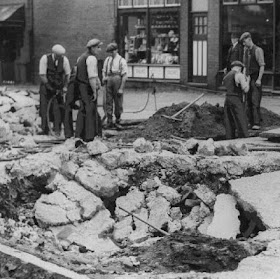In the days after Boxing Day the weather turned gloomy.
The weather forecast told me that we were experiencing a period of mist which occurs when warm moist air suddenly cools.
It is similar to fog but is thinner and more transparent which marks it different from fog which is denser and more opaque.
And that pretty much describes what happened.
During the day visibility became less, and while you could still see across the Rec, it became more like gazing out of a dirty window.
A situation which became more pronounced during the late afternoon as the light faded.Of course, for those of us born in the first half of the last century this mist was nothing to write home about.Growing up in London in the 1950s we experienced that real loss of visibility when pretty much every year the city was cloaked in deep dense fog.
First the outline of buildings across the road grew feint, which progressed till lampposts and passing traffic became obscured.
And with that blanket of grey came the loss of noise as every sound became muffled and you were lost in the swirling grey stuff.
I say fog but back then often it was smog that far more dangerous mix of pollutants caused by thousands of factory and household chimneys dispensing smoke from countless coal fires into the atmosphere.
One year a science teacher at school exposed filtered papers to the elements at regular intervals and recorded the growing amount of dark looking particles which had a settled on the paper.
All very good and as a 13-year-old it proved a slight welcome interruption to the lesson, until it dawned on us that as school closed early we would be making our way through the streets breathing in this gunge as we headed home or tried to do so.
On one occasion dad had got lost just yards from home, stuck on a roundabout trying to find the right turning to come off.
I was too young to remember the Great London smog of 1952 which enveloped the city two months after my second birthday, but it will have been an awful experience for mother who regularly suffered from bronchitis.Of course London was not alone in getting these fog and smog visitations, and I guess people from other towns and cities reading this will also have their memories of closed downs streets where things, and people slowly disappeared.
Happily, our mist cleared in just a few days and the other end of the Rec was again clear to see.
Location; The Rec, Beech Road
Pictures; Growing gloom, 2024, from the collection of Andrew Simpson














.jpg)


































